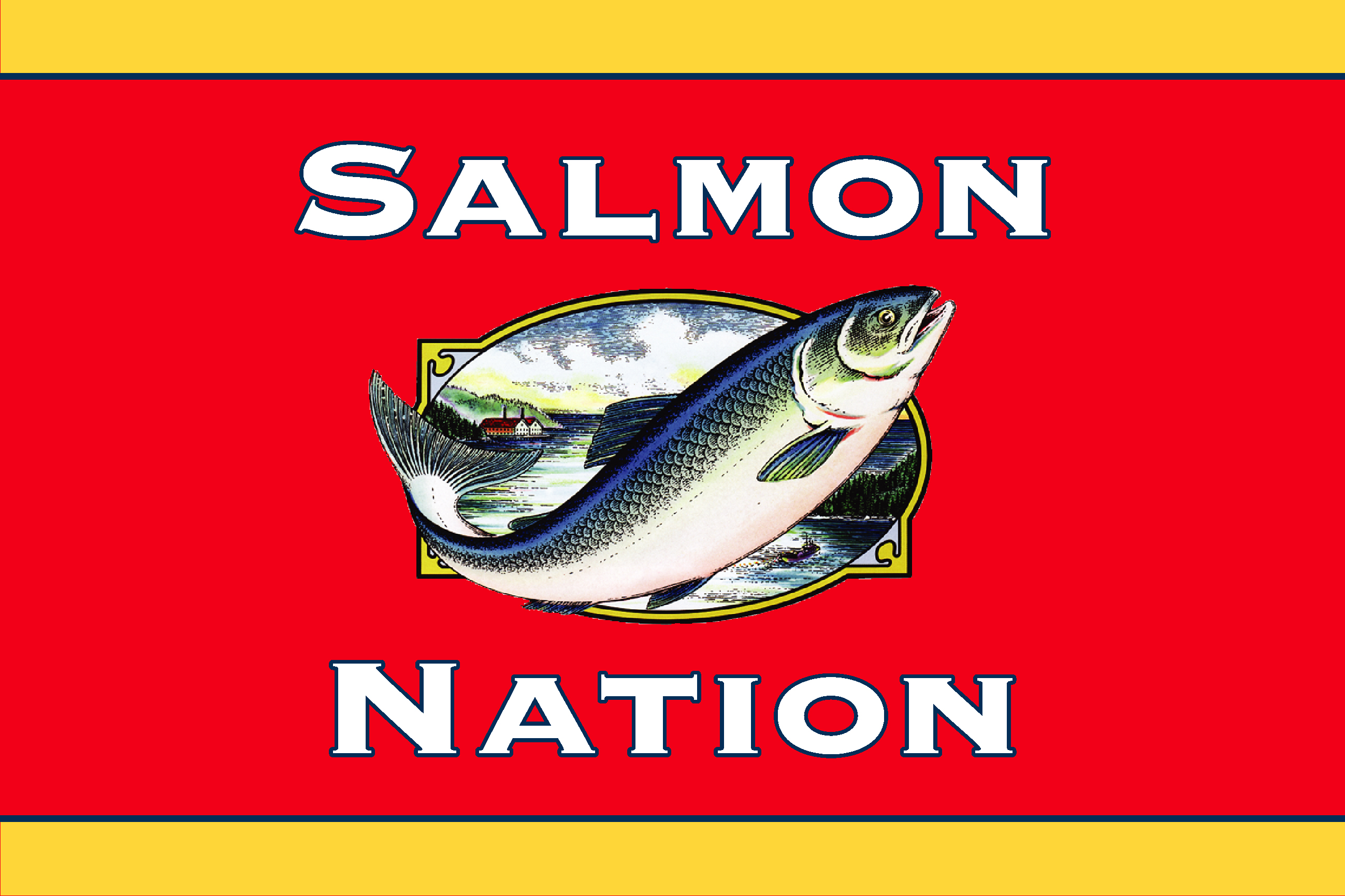
A crowd of over 300 community members, First Nations leaders, scientists, politicians, commercial and sport fishermen, and other concerned citizens gathered at the Salmon Nation Summit in Prince Rupert in January to talk wild salmon, liquefied natural gas (LNG), and ocean protection. The Summit ended with the signing of the Lelu Island Declaration.
Staff Counsel Hannah Askew and Linda Nowlan spoke on a legal panel at the Summit about Indigenous law and local marine planning and protection initiatives.

Staff Counsel Hannah Askew and Linda Nowlan on the Salmon Nation legal panel. (Photo property of Pat Moss)
BC is part of the Salmon Nation, which is strikingly evident in the Skeena estuary, where BC’s second largest river and some of the province’s strongest salmon runs meet the sea. Our rare estuary superhabitats which form only 2.3 percent of BC’s coastline, are used by roughly 80 percent of coastal wildlife species, and the estuaries face mounting development pressures. The city and port of Prince Rupert are located on the estuary, containing wharves, marinas, port facilities and industrial sites such as the Ridley coal terminal, Canada’s largest grain terminal, and a wood pellet shipping facility which all take advantage of the rail links to other parts of Canada and short shipping routes to Asia.
Flora Bank, in the heart of this estuary, is a place of abundant eelgrass beds that provide homes for invertebrates, waterfowl, forage fish and shellfish. Wild salmon thrive here. Published scientific studies show that an astonishing 88% of salmon from the Skeena river spend time at Flora Bank twice on their migratory journey, and “if proposed development negatively affects the salmon populations that use the estuary, then numerous fisheries would also be negatively affected.” The Summit concentrated on liquefied natural gas (LNG) and zeroed in on one of the eight LNG projects proposed for the Prince Rupert area: the Pacific NorthWest LNG export terminal, located right on Flora Bank, which will soon receive an environmental assessment decision. In 2015, the Lax Kw'alaams people, whose traditional territory includes the proposed project site, launched an aboriginal title claim and voted to turn down a benefit proposal of over $1 billion from Petronas, the project proponent, due to concerns over impacts to salmon.
In a breathtaking presentation on salmon science at the Summit, Dr. Jon Moore the Liber Ero Chair of Coastal Science and Management at Simon Fraser University traced the Skeena salmon’s journey. Click here to watch his presentation. Dr. Moore’s research, published in Science, the world’s most prestigious scientific journal, concluded that the Pacific NW LNG fossil fuel proposal was not considering upstream impacts on salmon and First Nation fisheries.
Prince Rupert is in the Marine Planning Partnership region. Marine plans agreed to by the government of BC and the Tsimshian First Nations (except the Lax Kw'alaams who chose not to participate) contain zones which could have provided some protection for Flora Bank. But the ‘protection management zones’ for the biologically rich estuary end at the Prince Rupert Port jurisdictional boundary and so exclude Flora Bank. The federal government did not participate in MaPP (it’s a long story…) and so federal port lands were excluded from the MaPP planning process, though, encouragingly, the new federal government promises to re-engage with MaPP, as well as take several key steps which will help protect Salmon Nation: restore the lost protections and introduce modern safeguards to the Fisheries Act, strengthen ocean co-governance, and reach Canada’s legal target of protecting at least 10% of our ocean and coastal environment by 2010 with an interim protection goal of 5% by 2017. (See the Fisheries and Oceans Ministerial mandate letter for these commitments.)
So what can be done? No final decision has yet been made on the Pacific NW LNG project. If the project does not go ahead due to lack of approval or changing oil markets which make it financially unfeasible, there are a number of protection options available for Flora Bank and Lelu Island under Canadian law:
- Creation of a marine protected area (MPA) under the federal Oceans Act.MPA sites can be designated for special protection for a number of reasons, including “the conservation and protection of commercial and non-commercial fishery resources, including marine mammals, and their habitats”, and the government is committed to accelerating creation of an MPA network.
- Extension of the provincial-First Nations co-led MaPP protection zones, as described above.
- Designation as an ecologically sensitive area under new and as yet untested regulations under the federal Fisheries Act, with accompanying regulatory restrictions on development.
There are also Indigenous law protection options.
Salmon, our provincial fish, is central to the identity and culture of all British Columbians. If the Salmon Nation is to continue to thrive, protecting the Skeena estuary is essential. As the BC government’s fact sheet on estuaries says: “All salmon species and Eulachon use estuaries as nurseries in which juveniles can grow and develop before heading into the more dangerous open ocean. Without these nurseries it is likely that both coastal and off-shore fisheries would be a fraction of their current size."
By Linda Nowlan
Staff Counsel